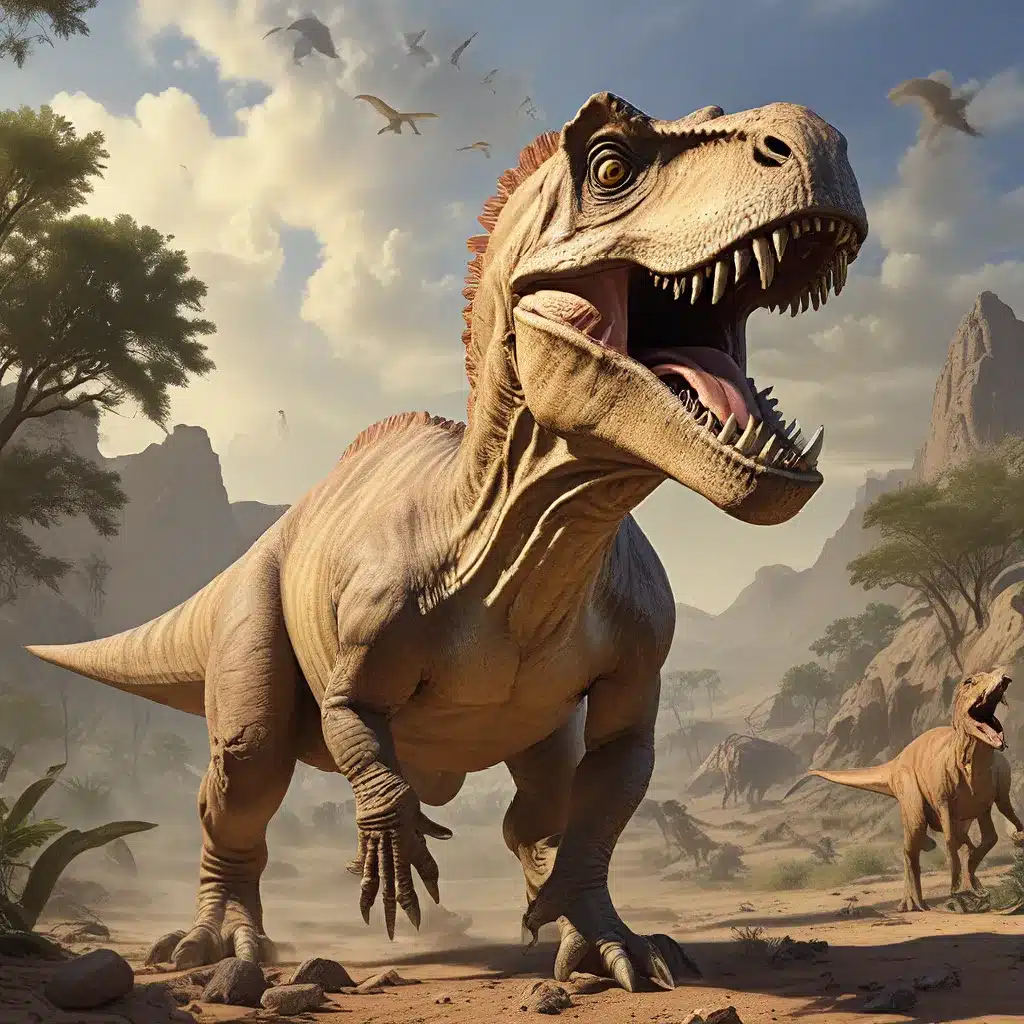
Dinosaurs as Chimeras of Science and Capitalism
The story of dinosaurs is also the story of capitalism. These prehistoric creatures, once the domain of scientific inquiry, have become deeply entangled with the social and economic forces that have shaped the modern world. From the Gilded Age industrialists who funded the early days of vertebrate paleontology to the present-day Chinese collectors seeking to display their wealth and status, dinosaurs have been a reflection of the evolving relationship between science and capitalism.
The mounted skeletons that have become a staple of natural history museums are not simply the result of biological evolution. Rather, they are a product of human ingenuity, “cobbled together from a large number of disparate elements that include plaster, steel, and paint in addition to fossilized bone.” This blending of ancient remains and modern materials has created a chimera, where it becomes difficult to distinguish the prehistoric from the contemporary.
Dinosaurs, like subatomic particles, are inaccessible to direct observation. Paleontologists must rely on inference, judgment, and imagination to reconstruct these long-extinct creatures from the fragmentary fossil record. This process has been guided by analogies to more familiar animals, with early interpretations modeling dinosaurs on pachyderms and later depictions emphasizing their bird-like qualities.
The Rise of American Dinosaurs
The discovery of dinosaur fossils in the American West during the late 19th century catalyzed a scientific and popular sensation. These American dinosaurs were seen as bigger and more imposing than their European counterparts, and their ascendancy coincided with the transformation of the United States into a global industrial powerhouse.
The extraction of mineral resources from the Rocky Mountain region, where many of these fossils were found, was instrumental in fueling the country’s economic growth. As a result, dinosaurs became associated with the celebrated western frontier and the extractive economy that dominated the region. Their discovery was “deeply embedded within the extractive economy that dominated the region at this time.”
Dinosaurs were elevated into a symbol for the entire political economy, representing the American exceptionalism that was celebrated during the Long Gilded Age. Their massive size and impressive appearance made them a perfect embodiment of the country’s economic might and power.
Dinosaurs and the Philanthropic Elite
The rise of dinosaurs as a scientific and popular spectacle coincided with the coalescing of a new social elite in the United States. Wealthy industrialists and financiers, who had amassed enormous fortunes through the process of industrialization, sought to signal their newfound class status through the acquisition of impressive natural history collections, including dinosaur fossils.
These philanthropic capitalists, such as J.P. Morgan and Andrew Carnegie, saw the establishment of natural history museums as a means to demonstrate that industrial capitalism could produce genuine public goods in addition to profits. Dinosaur displays became a powerful tool for naturalizing the evolution of American capitalism, portraying the transition to a corporate-dominated economy as a form of evolutionary progress.
Paleontologists, in turn, were careful to distance themselves from the world of commercial affairs, guarding the institutional autonomy of their discipline. This strategic alliance between scientists and philanthropists ultimately benefited both parties, with paleontologists acquiring a steady stream of funding while the wealthy elite could claim to be engaged in a genuinely altruistic endeavor.
The Dinosaur Renaissance and the Rise of China
In recent decades, we have witnessed a dinosaur renaissance, driven by the revolutionary idea that modern birds are directly descended from dinosaurs. This has led to a complete reimagining of these prehistoric creatures, portraying them as active, social animals often covered in colorful feathers, a far cry from the “drab, sluggish, and solitary” depictions of the past.
Much like the Gilded Age in the United States, the rapid industrialization of China has been accompanied by a growing interest in dinosaur fossils among the country’s new elite. Chinese industrialists, such as Zheng Xiaoting, have followed in the footsteps of their American counterparts, boosting their social distinction through the acquisition of impressive dinosaur collections.
The parallels between 19th-century America and present-day China are striking, with both countries undergoing periods of rapid economic growth fueled by the extraction of natural resources. This has led to a resurgence of interest in dinosaurs, with the most spectacular fossils now hailing from northeastern China, much as the most significant discoveries of the past came from the American West.
Conclusion: Reinterpreting Dinosaurs in the Modern Era
The history of dinosaur paleontology offers a compelling perspective on the complex relationship between science and capitalism. Far from being insulated from the demands of the marketplace, vertebrate paleontology has been deeply entangled with the social and economic forces that have shaped the modern world.
From the Gilded Age industrialists who funded the early days of the discipline to the Chinese collectors of the present day, dinosaurs have served as a reflection of the evolving relationship between science and capitalism. The Lost Kingdoms website provides a rich exploration of these themes, offering insights into the cultural significance and historical legacy of these remarkable prehistoric creatures.
As we continue to uncover new and surprising revelations about dinosaurs, from their feathered appearances to their social behaviors, it is clear that these ancient creatures continue to captivate and inspire us. By understanding the complex interplay between science and capitalism that has shaped our understanding of dinosaurs, we can gain a deeper appreciation for the role these prehistoric icons play in our collective imagination and the ongoing quest to unravel the mysteries of the past.


